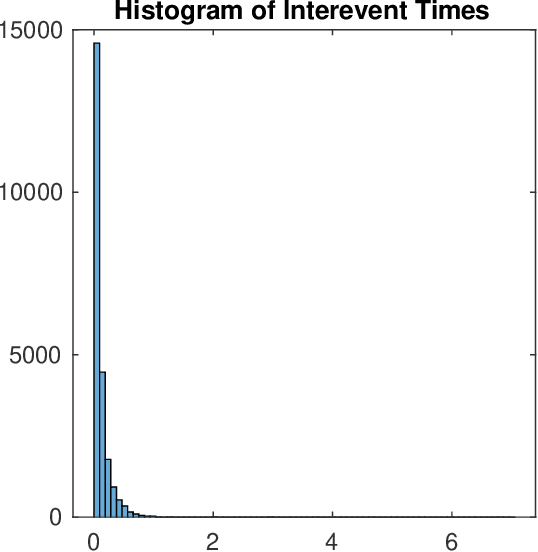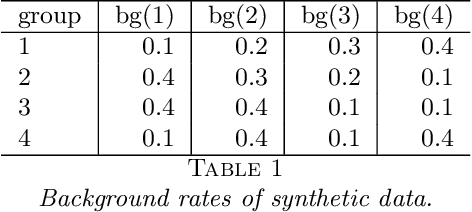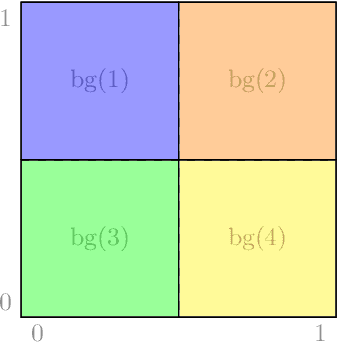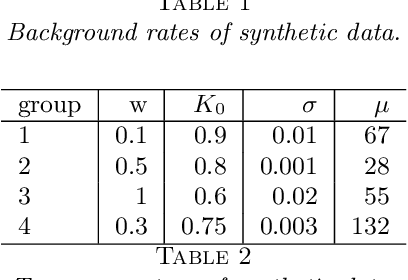Jeremy Carter
Point Process Modeling of Drug Overdoses with Heterogeneous and Missing Data
Oct 12, 2020



Abstract:Opioid overdose rates have increased in the United States over the past decade and reflect a major public health crisis. Modeling and prediction of drug and opioid hotspots, where a high percentage of events fall in a small percentage of space-time, could help better focus limited social and health services. In this work we present a spatial-temporal point process model for drug overdose clustering. The data input into the model comes from two heterogeneous sources: 1) high volume emergency medical calls for service (EMS) records containing location and time, but no information on the type of non-fatal overdose and 2) fatal overdose toxicology reports from the coroner containing location and high-dimensional information from the toxicology screen on the drugs present at the time of death. We first use non-negative matrix factorization to cluster toxicology reports into drug overdose categories and we then develop an EM algorithm for integrating the two heterogeneous data sets, where the mark corresponding to overdose category is inferred for the EMS data and the high volume EMS data is used to more accurately predict drug overdose death hotspots. We apply the algorithm to drug overdose data from Indianapolis, showing that the point process defined on the integrated data outperforms point processes that use only homogeneous EMS (AUC improvement .72 to .8) or coroner data (AUC improvement .81 to .85).We also investigate the extent to which overdoses are contagious, as a function of the type of overdose, while controlling for exogenous fluctuations in the background rate that might also contribute to clustering. We find that drug and opioid overdose deaths exhibit significant excitation, with branching ratio ranging from .72 to .98.
 Add to Chrome
Add to Chrome Add to Firefox
Add to Firefox Add to Edge
Add to Edge